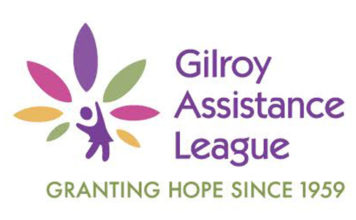Will revisit Gilroy Unified School District’s plan at future
meeting
By heather bremner Staff Writer
Gilroy – Trustees and teachers rejected the district’s prescribed cure for lagging math scores, calling the plan vague, confusing and chock-full of flaws.
“This plan gives me that uh-oh feeling,” said Valerie Kelly, an Ascencion Solorsano Middle School teacher, during the public comment segment at Thursday’s meeting.
As an algebra teacher, Kelly is concerned about the middle school component of the plan, which lays out a six-sentence remedy for more “algebra readiness skills.” The rejected plan called for the replacement of beginning algebra classes with “algebra readiness” courses aligned with the state’s new math framework.
In addition, it entailed hiring a math consultant to work with local math teachers to help develop curriculum, instructional materials and assessments. Kelly had envisioned a “meaningful and essential,” plan that holds everyone accountable, “not another hoop to jump through.”
But the district’s approach failed to include those elements, she said.
Kelly’s call for an improved plan, was echoed by many. A small group of teachers and parents headed to the podium, each spending three minutes of the public communication allotment, highlighting the various blemishes of the 20-page Comprehensive Math Plan.
Revamping Gilroy Unified School District’s mathematics program has been a priority for at least two years, ever since educators and district officials began taking a close look at the local epidemic of substandard math scores.
Less than half of elementary students, 30 percent of middle schoolers and only 11 percent of high school students are proficient in math. And when compared to the state, most Gilroy students in all grades except for third, are left behind.
This past year, the district staged Saturday math summits with the help of two noted math experts from the University of California, Berkeley and Stanford University. The mathematics professors also helped district officials develop the math plan.
Wayne Scott, who attended all four math summits, said he just doesn’t understand why the district continues to place unprepared students in algebra classes. The Gilroy High School math teacher pointed out that Assistant Superintendent Jacki Horejs said during the presentation that some students aren’t ready for algebra.
Even when the district proposes the implementation of a new math plan, it involves the promotion of all freshman to Algebra I, Scott said, adding that students who don’t know their multiplication tables won’t succeed in algebra regardless of how much help they receive.
The educator also pointed out that the words “rigor and rigorous,” are woven continuously throughout the plan with no specifics.
Michelle Nelson spent a few minutes delivering the union perspective. The Gilroy Teacher’s Association president said teachers aren’t happy with the plan for the following reasons: it was primarily designed by district officials without the final approval of math educators, was up for adoption in the summer, lacks specificity, increases the workload, assumes there’s a math content expert at every site and funding is shaky since some of the components depend upon unreliable sources such as grants.
Rhoda Bress, broke the ice of the math discussion. Following the conclusion of the PowerPoint presentation, the board member said she studied the plan extensively and noticed that it contains too many red flags for her to throw her support behind.
That so many of the solutions require extra cash and human resources, is a concern, she said. The district plan calls for more professional development, the hiring of a consultant, math expert and math coaches.
And like many of the speakers, Bress also raised the issue of accountability.
“I wonder how we’re going to figure out which of these (elements of the plan) works and doesn’t,” she said.
But the major flaw she noticed in the district’s approach is that “it seems to have prescribed a treatment before making a diagnosis,” she said.
Bress said she understands that the Berkeley math professor Hung-Hsi Wu is an expert, but pointed out that “he’s never been in our classrooms.” When her children had academic issues, Bress explained, she headed to the classroom. Teachers know why a student isn’t doing well.
The math plan doesn’t take that into account and fails to address the most essential component: students, Bress said.
Jaime Rosso and David McRae were the only board members who expressed a desire to approve the math blueprint on Thursday, pointing out that no single plan will be perfect and that something needs to be done – quick.
“We have a building that’s on fire and we need to do something,” McRae said.
In a unanimous vote, the board decided to move the item to the Aug. 3 meeting. Board President Pat Midtgaard was absent.












